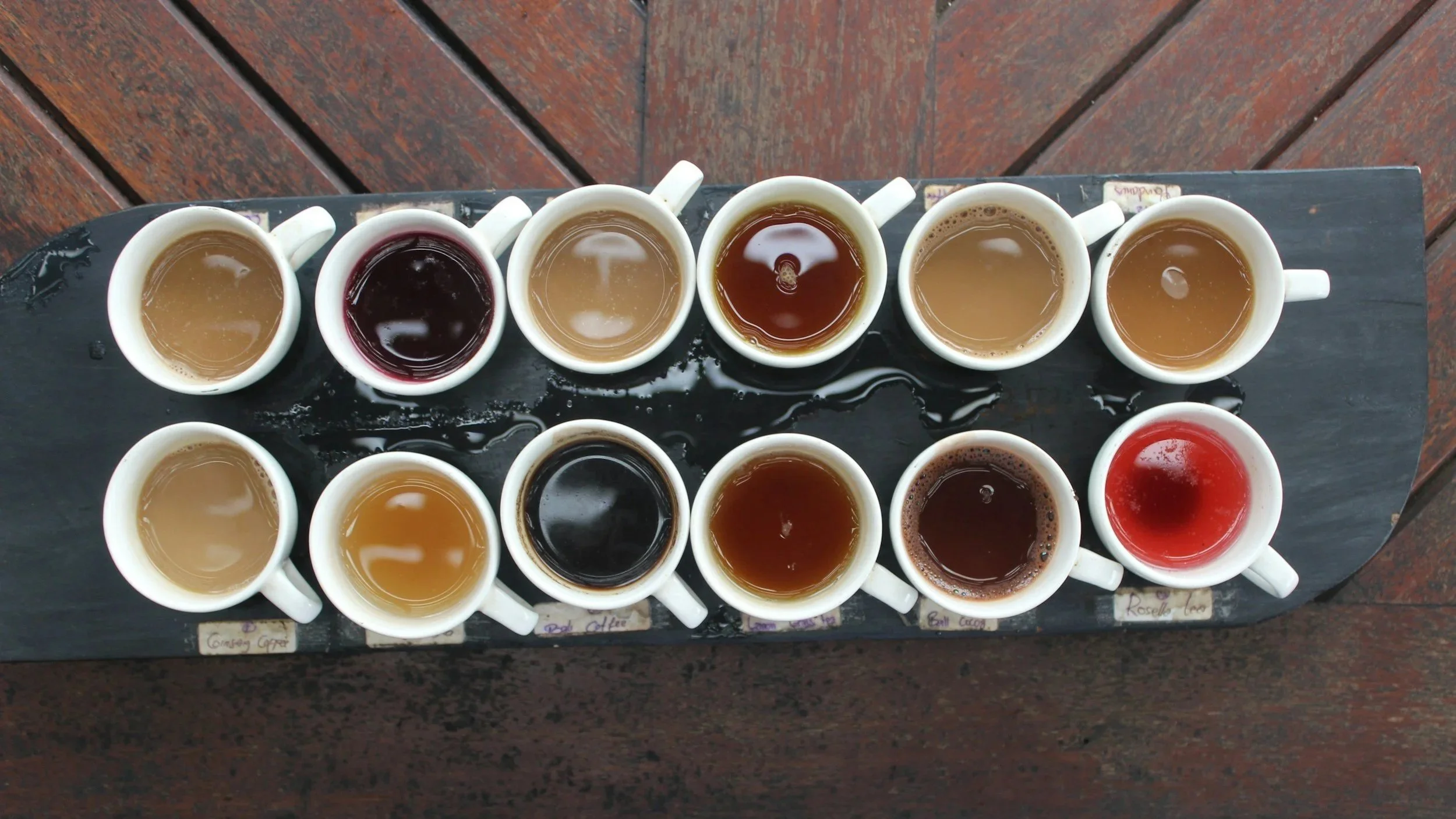The Simple Guide to Coffee Tasting
On the back of each label, we include a simple tasting card - and on this page, we will show you how to use it! You can find a blank version of our tasting card HERE to reference as you read on.
This is NOT a guide for a professional cupping, and is meant as a fun introduction to casual coffee drinkers. There are many guides online of how to critically compare coffees with as little interference as possible. We are more excited to instead share some tips of how to think about that brew already in your hand that you made to your own preference. Let’s jump in!
Initial Tasting
These are your first initial thoughts - no need for jargon! Write what comes to mind!
-
This is the odor of the ground coffee.
-
This is the odor of the brewed coffee.
-
Simple! What does the taste of the coffee remind you of? What foods? What other things?
-
This is the flavor that stays in your mouth after you swallow your coffee. It can be short or long, pleasant or sharp, or whatever else comes to mind!
Basic Tastes
Yes, we left out “Salty,” you probably aren’t going to run into that here…
-
Sweet taste is the flavor that feels pleasant and sugary on your tongue, like honey, fruit, or candy. It’s smooth and usually makes the coffee feel more gentle and enjoyable.
-
Bitter taste is a sharp, sometimes harsh flavor that can make your tongue feel a little dry or puckery. It’s the opposite of sweet and is often found in dark-roasted coffee or strong espresso.
-
Sour taste is a bright, tangy flavor that makes your mouth pucker a little, like lemon or green apple. In coffee, it’s often called acidity and adds liveliness to the flavor.
-
Umami taste is a savory, full-bodied flavor that feels rich and satisfying, like broth, soy sauce, or cooked mushrooms. In coffee, it can add depth and a subtle meaty or nutty quality without being salty.
-
Does the coffee feel thin (like water) or thick (like whole milk) in your mouth?
-
Often confused with “bitter” - astringency isn’t a taste your tongue picks up, but a texture or feeling. Astringency is the mouth-drying sensation that makes you puckery (think of the tannins in red wine.)
-
This one is relatively straight forward - is it hot or cold!
(Pro-tip: coffee is typically easier to taste as it cools down to room temperature, we recommend you keep tasting at all temps to see how the flavors become more apparent.)
Mouthfeel
Texture
-
A smooth coffee texture means it feels soft and gentle in your mouth, without sharp edges. It’s easy to sip, not rough, gritty, or harsh—almost like silk or cream gliding across your tongue.
-
A creamy coffee texture feels rich and velvety, almost like milk or melted chocolate. It coats your mouth smoothly and has a thicker, softer body than regular coffee.
-
A rough coffee texture feels harsh or scratchy in your mouth. It can seem dry, gritty, or coarse—like the edges aren’t polished, making it harder to drink smoothly.
-
A round coffee texture feels full and balanced in your mouth, with no sharp edges or thin spots. It’s smooth all the way through, like the flavor and body wrap around your tongue evenly.
-
An oily coffee texture feels slick or slightly heavy in your mouth, like a thin layer of oil coating your tongue. It’s smooth but has a noticeable weight or richness.
-
A clean coffee texture feels light, crisp, and clear in your mouth. There’s no heaviness, grit, or muddiness—each sip tastes fresh and straightforward.
-
A mouthcoating or lingering coffee texture feels like it stays on your tongue and the roof of your mouth after swallowing. It’s rich and persistent, leaving a lasting impression rather than disappearing quickly.
Flavor & Aroma Attributes
Now that you have had more time with the brew, we try to use some of the more common coffee terms to narrow down what you were tasting in the initial tasting section.
If you want to get more specific, look at “Coffee Taster’s Wheel” in additional resources at the bottom of this page.
-
A sweet, floral, aromatic blend of a variety of ripe fruits.
-
An aromatic characteristic of fresh, plant-based materials associated with grassy and leafy flavors.
-
An aromatic that is sweet and lightly brown, associated with dark fruit such as dried plum.
-
Sharp, clean sourness you get from lemons, limes, and oranges (think lemony bright)
-
Smooth, persistent tartness in green apples, cherries, and pears.
-
The sharp, vinegary bite in vinegar and pickles.
-
A sweet, light aromatic associated with fresh flowers.
-
A slightly sweet, brown, woody aromatic associated with nuts and seeds.
-
A brown, sweet, bitter aromatic associated with cocoa beans and chocolate bars.
Hedonic Value
A fancy term for a simple (yet most important) question: “Did you like it?” Don’t be concerned with what someone else tells you is a “good coffee” - just put a number on it 1-10, how enjoyable was it to you?
Additional Resources
We have put together a list of additional resources you may want to explore if you are interested in deepening you knowledge in coffee tasting:
● Specialty Coffee Association (SCA) Coffee Taster’s Wheel: HERE
● World Coffee Research Sensory Lexicon: HERE
● We also highly recommend the book “How to Taste Coffee” by Jessica Easto available on Amazon (which much of this page was derived from).

